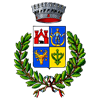ROMAN ORIGINS AND THE BIRTH OF A NAME
The foundations of Roisan are rooted along the ancient road that skirted the Buthier stream. This road, providing an alternate route from Aosta to the Great St. Bernard Pass, existed even before the Romans arrived. However, it was they who sought to extend their control over this region, intervening with the local Salasse tribes.
The name "Roisan" has its roots from Roman times, linked to agricultural lands owned by the "Rosius." The Roman presence is also evidenced by funerary inscriptions dated between the 1st and 2nd century AD, preserved in the regional archaeological museum.
HISTORICAL EVOLUTION
In 1105, a document mentioned "Rosiano" in relation to an exchange of goods between prominent ecclesiastical figures. Over the centuries, Roisan underwent several changes. In the 13th century, for example, it was divided between two lordships: one under the Bishop of Aosta and the other under the Quart family.
The Rhins tower-fortress stands as a historical symbol, once the seat of the bishopric jurisdiction. Only in the 18th century did the communities of the Aosta Valley redeem their freedom from feudal bonds.
Several families have ruled Roisan, including the Savoys, Closellinaz, and Champvillair. Jean de Champvillair, a notable member, contributed to the restoration of the Collegiate Church of St. Orso in Aosta.
EDUCATION AND DEVOTION
In 1715, Roisan saw the birth of one of the region's first public schools, followed by a girls' school in 1815.
During the world wars, Roisan stood out as the only Italian village not to lose any soldiers, attributing such a miracle to Saint Vittore. A local tradition speaks of a "secret", a votive prayer sewn by the soldiers' wives into their uniforms.
LOCAL CURIOSITIES
Within Roisan's cemetery lie significant figures like priests Auguste Apostolo and Jean Bonin. Lacking natural springs, Roisan exploited human ingenuity with the creation of artificial streams, or "Rus," that still shape the landscape today.
A local legend asserts that Calvin, the famous reformer, passed through Roisan in 1536, crossing the Buthier on the Closellinaz bridge.
AN IMMORTAL TALE
In 1999, on the parish bulletin, a captivating narration by Sonia Fiacchi set in Roisan was published. It describes two pilgrims traveling during the jubilee year, led by Boniface of Roisan, a historical figure of great significance in the 14th-century Valdostan church and renowned physician at the court of Count Amedeo VI of Savoy.
Address
- Roisan
- Roisan (Ao)
- Find on the map.





